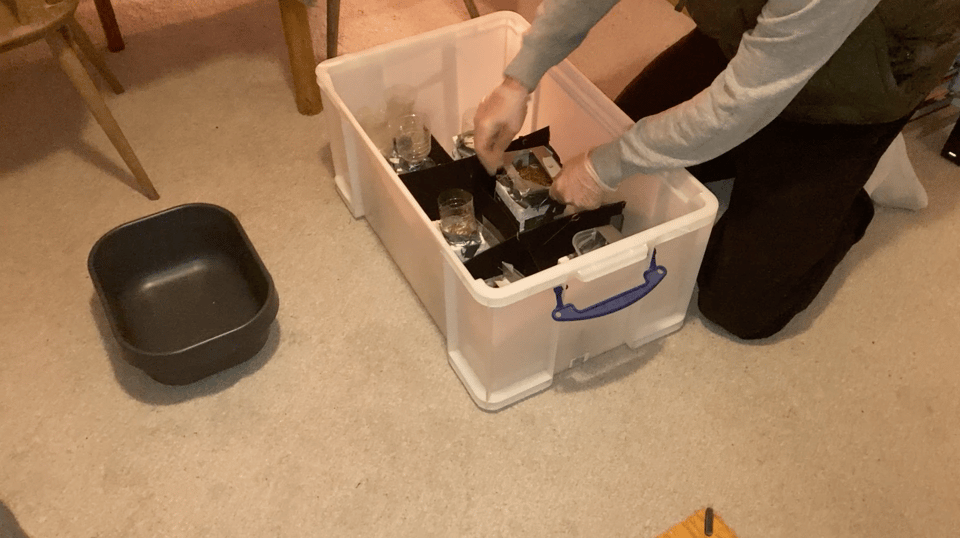The mealworm shed
I'm getting a shed. And you guessed it... it's for my mealworms.
Embarking on biocollaborative design can be quite a challenge when it comes to convincing studios to allow such processes within their spaces. Often, innovators in this field find themselves setting up makeshift setups at home, whether that involves creating a home-brew mycelium incubator or, in my case, establishing a dedicated mealworm shed.
Mealworm wrangling in my living room
My initial experiments with mealworm collaboration were conducted in our guest bedroom, much to the concern of my partner. However, now that I've upgraded to having a garden space, I've been on the hunt for the ideal shed that suits my requirements.
Mealworms are fairly resilient creatures that don't demand excessive attention, although a few key factors require monitoring. Maintaining a temperature around 24 degrees Celsius is optimal, which will involve using a space heater and a heated blanket to ensure warmth at night. Given their tendency to climb, a fish tank with a secure lid is indispensable to prevent mealworm chaos. Additionally, they prefer a certain level of moisture, which shouldn't be a problem considering the humidity during the summer months. Incorporating moist foods into their diet can further address this moisture requirement.
The "design vision" of the shed
I'm also looking into expanding the scale of my experiments, which is why a vertically spacious shed offers greater flexibility for housing the mealworms in containers beyond just fish tanks.
It's important to keep in mind that mealworms aren't in their final form; they're actually the larvae of beetles. Planning ahead for what to do with them once they start metamorphosis in three months is essential.
This particular aspect raises a range of ethical questions. How should live organisms be treated within the biocollaborative process? What responsibilities do designers have towards these other organisms involved? Ingeniously, Doppelganger Studio has transformed mealworms into chitofoam, a biopolymer. Mealworms are commonly used as animal feed or even as insect protein for human consumption. Are these viable options, or is it ethically problematic to terminate and consume our design collaborators? These are questions for another week but any thoughts you have will be greatly appreciated!
Stay tuned as we order and build the shed with a run through of all the equipment being used.
See you next week,
Will

